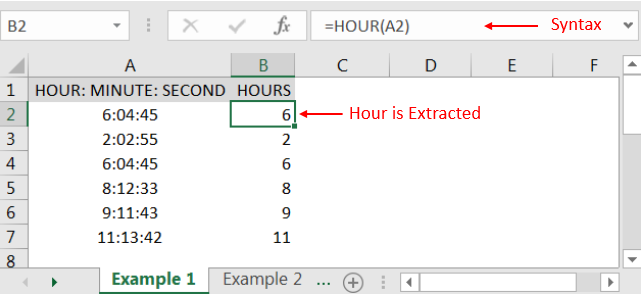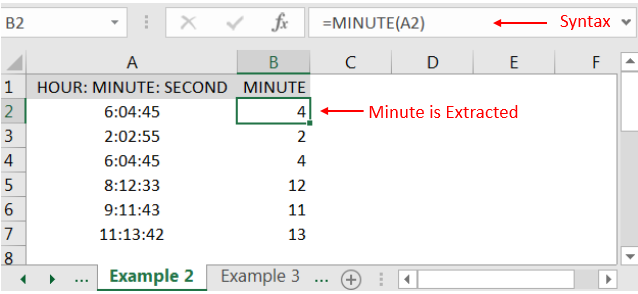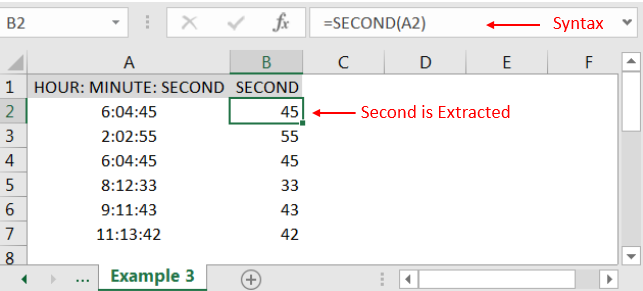Microsoft Excel “HOUR, MINUTE, SECOND Functions” are time related functions helps to extract the Hour, Minute or Second from a complete Time. These functions are very useful while transforming the existing database and each of them has their unique characteristics.
“HOUR” function will return the “Hour” value from a complete Time. Output of the function will be in Numeric format and would be between 1 to 24.
“MINUTE” function will return the “Minute” value from a complete Time. Output of the function will be in Numeric format and would be between 1 to 60.
“SECOND” function will return the “Second” value from a complete Time. Output of the function will be in Numeric format and would be between 1 to 60.
“HOUR, MINUTE, SECOND Functions” can be used in any Time format, which makes the function useful and advantageous. Applying the functions manually (one by one) to insert the value is very difficult and “HOUR, MINUTE, SECOND Functions” helps to apply the function in large database at once and makes the work easy, saves time and increases efficiency.
“HOUR, MINUTE, SECOND Functions” are very useful and can be used in many situations. Like it can be used as follows:
– Preparing and consolidation of report as per HOUR, MINUTE or SECOND
– Preparing Time and Motion study report as per specific period
– Or any other database where there is requirement extracting HOUR, MINUTE or SECOND
HOUR, MINUTE or SECOND functions returns the output in Number format but if there is any error in the input cell then it will return the output error as “#VALUE!”
We need to ensure that the input data i.e. Time should be in correct and recognizable format for Microsoft Excel.
=HOUR(serial_Number)
Serial_number, argument is used to give the cell address of Time from which HOUR should be extracted.
“HOUR” function will return the output from a Time. As per below example we can see that with the help of HOUR function, Hour is extracted i.e. 6 from time i.e. 6:04:45

=MINUTE(serial_Number)
Syntax Description:
Serial_number, argument is used to give the cell address of Time from which Minute should be extracted.
“MINUTE” function will return the output from a Time. As per below example we can see that with the help of MINUTE function, MINUTE is extracted i.e. 04 from time i.e. 6:04:45

=SECOND(serial_Number)
Serial_number, argument is used to give the cell address of Time from which Second should be extracted.
“SECOND” function will return the output from a Time. As per below example we can see that with the help of SECOND function, SECOND is extracted i.e. 45 from time i.e. 6:04:45

Hope you liked. Happy Learning.
Don’t forget to leave your valuable comments!

Watch: How to use MODE & MODEIF Function in Excel? What is MODE Function? In Excel, the “MODE” function is a statistical tool that identifies and returns the most frequently occurring value within a set…

RIGHT function is used for extracting the “Right Most” characters from the available string in Microsoft excel. Function returns value to new string.

LEFT function is used for extracting the “Left Most” characters from the available string. The output of the function returns the extracted characters in new cell

MIN function is used to get the smallest number in range or list of values.MIN function has one required i.e. number1 and optional argument i.e. [number2]

Microsoft Excel “TODAY” function is used to get the current Date. It is very useful function and can be used in many ways. “TODAY Function” does not have any argument that makes this easy to apply and implement.

Watch: How to use SUMIF & SUMIFS Function in Excel? What is SUMIF Function? The SUMIF function in Excel adds up values in a range of cells that meet certain criteria. Click here to Read Full…